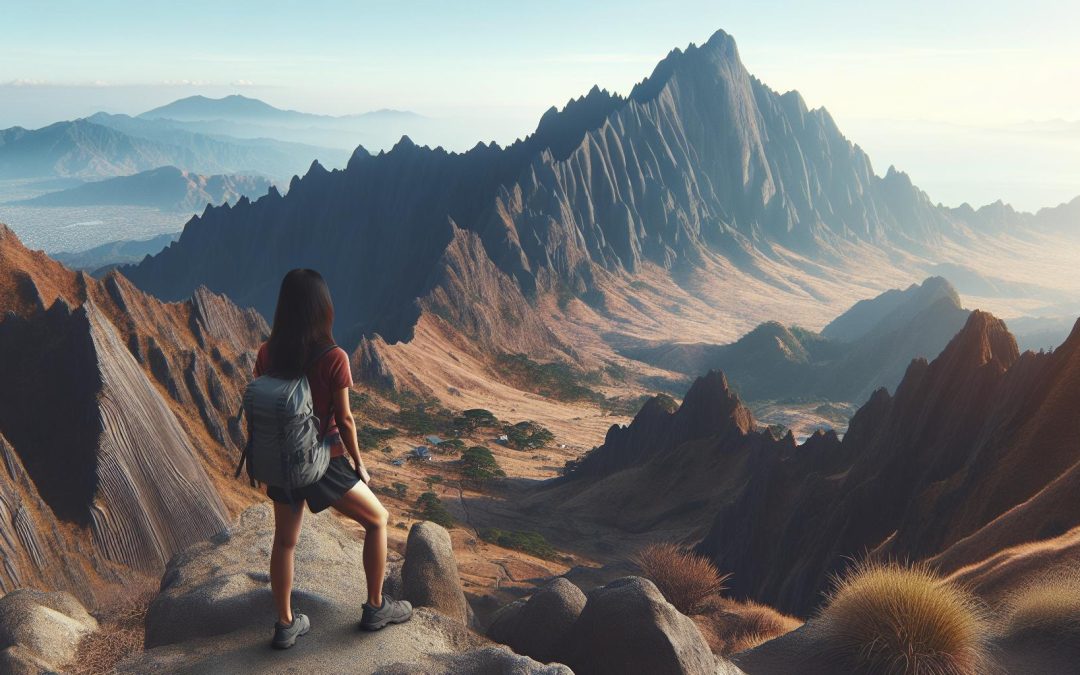Nestled in the heart of Phoenix, Arizona, Camelback Mountain stands as a beacon for adventurers and nature lovers alike. It’s not just any mountain—it’s an iconic landmark that’s captured the hearts of locals and tourists for years. With its unique camel-shaped silhouette, it’s easy to see why it’s a favorite for hikers and photographers.
I’ve had the pleasure of conquering its trails more than once, and let me tell you, the panoramic views from the top are nothing short of breathtaking. Whether you’re a seasoned hiker or someone looking for a challenging yet rewarding outdoor activity, Camelback Mountain promises an unforgettable experience.
History of Camelback Mountain
I’ve always been fascinated by how natural landmarks come to be esteemed, and Camelback Mountain has a pretty interesting backstory. It’s not just a charming peak for us hikers and nature lovers; it has a rich history that adds to its appeal.
Legend has it the mountain was considered sacred by the indigenous Hohokam people, who inhabited the Phoenix area up to the 14th century. They believed the mountain to be a holy place, and evidence of their presence, through petroglyphs and artifacts, have been found around the Camelback range.
In the late 1800s, the United States federal government began to recognize the value of the land, setting the stage for development and preservation efforts. Camelback Mountain got its name from settlers who thought its shape resembled the hump and head of a kneeling camel.
Fast forward to the 20th century, it became clear that this mountain held more value than just the potential for real estate development. Efforts from local citizens and conservationists led to parts of Camelback Mountain being designated as a city park in the 1960s, ensuring the preservation of its natural beauty for future generations. This designation helped protect the mountain from overdevelopment, keeping it accessible and preserving its unique ecosystem.
What stands out to me is the ongoing love affair between the mountain and the people of Phoenix. Over the years, Camelback Mountain has become a symbol of the city’s commitment to preserving natural beauty amidst rapid urban expansion. It’s a testament to the community’s dedication to balancing growth with environmental stewardship.
Today, when I hike up Camelback Mountain, I don’t just see breathtaking views; I see a piece of history, a preserved sanctuary that has stood the test of time, thanks to the efforts of those who recognized its worth long before I set foot on its trails.
Popular Hiking Trails

When I ventured to Camelback Mountain for the first time, I was amazed at the range of hiking trails available. Each trail has its own unique features, challenges, and breathtaking vistas, making the experience special for hikers of all levels. Today, I’ll share some insights into the most popular trails on Camelback Mountain that have captivated me and countless others.
Echo Canyon Trail
The Echo Canyon Trail is perhaps the most famous and certainly one of the most challenging routes. It’s a steep, rocky climb that requires a bit of scrambling in places. But the effort is well worth it. At the summit, I was rewarded with 360-degree views of the Phoenix area that were nothing short of spectacular. Just remember to bring plenty of water, especially in the hotter months.
- Difficulty: Strenuous
- Length: 2.3 miles round trip
- Highlights: Panoramic views, challenging terrain
Cholla Trail
On the other side of the mountain lies the Cholla Trail, a slightly less steep path but by no means easy. What I love about this trail is the gradual ascent, which allows for more time to appreciate the diverse flora and fauna. The trail ends with a bit of a rocky scramble, leading to the same rewarding views shared by the Echo Canyon summit. It’s a fantastic option for those looking for a challenging but slightly less intense hike than Echo Canyon.
- Difficulty: Moderate to strenuous
- Length: 3.1 miles round trip
- Highlights: Diverse ecosystems, slightly less crowded
Both of these trails offer unique experiences and views that encapsulate the beauty of Camelback Mountain. Whether it’s your first hike here or your fiftieth, the mountain’s trails offer something new to discover with each visit. Remember to respect the environment and stay on marked paths to ensure this incredible natural landmark can be enjoyed for generations to come.
Unique Features of the Landscape
While the trails up Camelback Mountain steal a lot of the limelight, it’s the unique features of the landscape that truly make this destination stand out. I’m always fascinated by the diversity of the terrain and the varied ecosystems that exist within such a compact area. Camelback Mountain isn’t just a hiking destination; it’s a vibrant natural environment, bursting with life and geological wonders.
One of the most remarkable aspects of Camelback Mountain is its geology. The mountain is predominantly made of red sandstone and granite, creating a striking contrast against the blue sky. This blend of materials is not only beautiful to look at but offers insights into the mountain’s storied past. Geologists have determined that the sandstone was formed from ancient sand dunes, while the granite dates back even further, giving us a tangible connection to the Earth’s history.
The flora and fauna of Camelback Mountain are equally compelling. The lower elevations are dotted with lush desert vegetation, including the iconic saguaro cactus, which stands tall and proud against the landscape. As you ascend, the vegetation transitions to hardier desert shrubs and grasses, adapted to the mountain’s harsher conditions. Wildlife here is abundant. I’ve been lucky enough to spot coyotes, rabbits, and a variety of bird species, including the majestic peregrine falcon. It’s a reminder of the delicate balance of ecosystems and the importance of conservation efforts.
What’s more, the mountain’s unique position within Phoenix means it offers unparalleled panoramic views of the city and the surrounding Sonoran Desert. Whether you’re catching a sunrise from the summit or watching the city lights sparkle at dusk, the vistas are nothing short of breathtaking. It’s easy to see why Camelback Mountain is considered a jewel of the Phoenix area, attracting visitors from all corners of the world.
Wildlife and Flora
When I first approached Camelback Mountain, I couldn’t believe the diversity of life thriving in what, at first glance, seems like a barren desert landscape. The mountain’s unique ecosystem supports an array of plant and animal species, each adapted to the harsh desert conditions.
The flora here is simply remarkable. At the base, you’ll find dense thickets of shrubbery and cacti, including the iconic saguaro, which stands tall against the desert sky. These giants of the Sonoran Desert can live up to 200 years and are a sight to behold, especially when they bloom in the late spring. Further up, the vegetation shifts to hardier species, such as the creosote bush and various tough grasses that have adapted to the mountain’s rocky crevices.
The variety of cacti on Camelback Mountain is something I always find intriguing. There’s more than just the saguaro; barrel cacti, prickly pears, and cholla make frequent appearances, creating a mosaic of green, yellow, and even purple hues across the terrain.
As for the wildlife, it’s more abundant than one might expect. Early mornings or late afternoons are the best times to spot some of Camelback’s inhabitants. I’ve been lucky enough to catch glimpses of mule deer navigating the rocky slopes and jackrabbits darting through the underbrush. The skies above often feature the majestic flight of peregrine falcons, the fastest birds in the world, reaching speeds over 200 mph in a dive.
Here’s a quick overview of the wildlife diversity:
| Species | Description |
|---|---|
| Saguaro Cactus | Up to 40 feet tall, lives 150-200 years |
| Peregrine Falcon | World’s fastest bird, over 200 mph in a dive |
| Mule Deer | Often seen at dusk and dawn on cooler days |
| Jackrabbits | Known for their large ears and powerful legs |
Despite the challenging conditions, life flourishes on Camelback Mountain, creating a vibrant ecosystem. The intertwining of the rugged landscape with the resilience of its flora and fauna makes this location not just a hiker’s paradise but a testament to nature’s adaptability.
Safety Tips and Regulations

Exploring Camelback Mountain is an unforgettable adventure, but safety always comes first. Over the years, I’ve picked up some crucial tips and learned about regulations that every hiker should know before setting off. These guidelines not only ensure your safety but also protect the natural beauty of the mountain for future visitors.
First off, hydration is key. The Arizona heat can be unforgiving, especially during summer months when temperatures can soar above 100°F. I always carry at least two liters of water for a short hike and more if I plan to be out longer. It’s surprising how quickly you can become dehydrated in the desert climate.
Wearing the right footwear is just as important. A sturdy pair of hiking boots can make all the difference in maneuvering the rugged and sometimes slippery terrain. I’ve seen too many hikers in flip-flops or unsuitable shoes, struggling on the trails or, worse, getting injured.
Trail etiquette is a significant part of maintaining the serene experience of hiking Camelback Mountain. Keeping to the marked trails, not only preserves the natural habitat but also minimizes the risk of getting lost. I always make a point to carry out everything I bring in, following the “Leave No Trace” principles.
Regarding regulations, there are a few specific ones to highlight:
- Pets are not allowed on the trails. This rule helps protect both the local wildlife and ensures the safety of all hikers.
- Group sizes are limited to preserve the tranquility and minimize impact on the environment.
- Certain trails may be closed during extreme weather conditions or for maintenance. Always check the official website or contact local authorities for the latest information before you plan your hike.
Hiking Camelback Mountain is an experience I cherish, and adhering to these tips and regulations has made each visit safe and enjoyable. Remembering these essentials will help ensure a memorable and secure adventure on this majestic natural landmark.
Conclusion
I’ve always believed that the best adventures are those where we not only challenge ourselves but also respect the environment we’re exploring. Camelback Mountain offers just that—a perfect blend of adventure and awe-inspiring views, wrapped up in the responsibility of preserving its beauty. Remembering to stay hydrated, wear the right shoes, and follow the trail rules isn’t just about personal safety; it’s about ensuring this iconic landmark remains pristine for generations to come. So, whether you’re a seasoned hiker or someone looking to experience Arizona’s natural beauty for the first time, Camelback Mountain awaits with open trails and breathtaking vistas. Let’s make every hike memorable, safe, and respectful. Happy trails!







